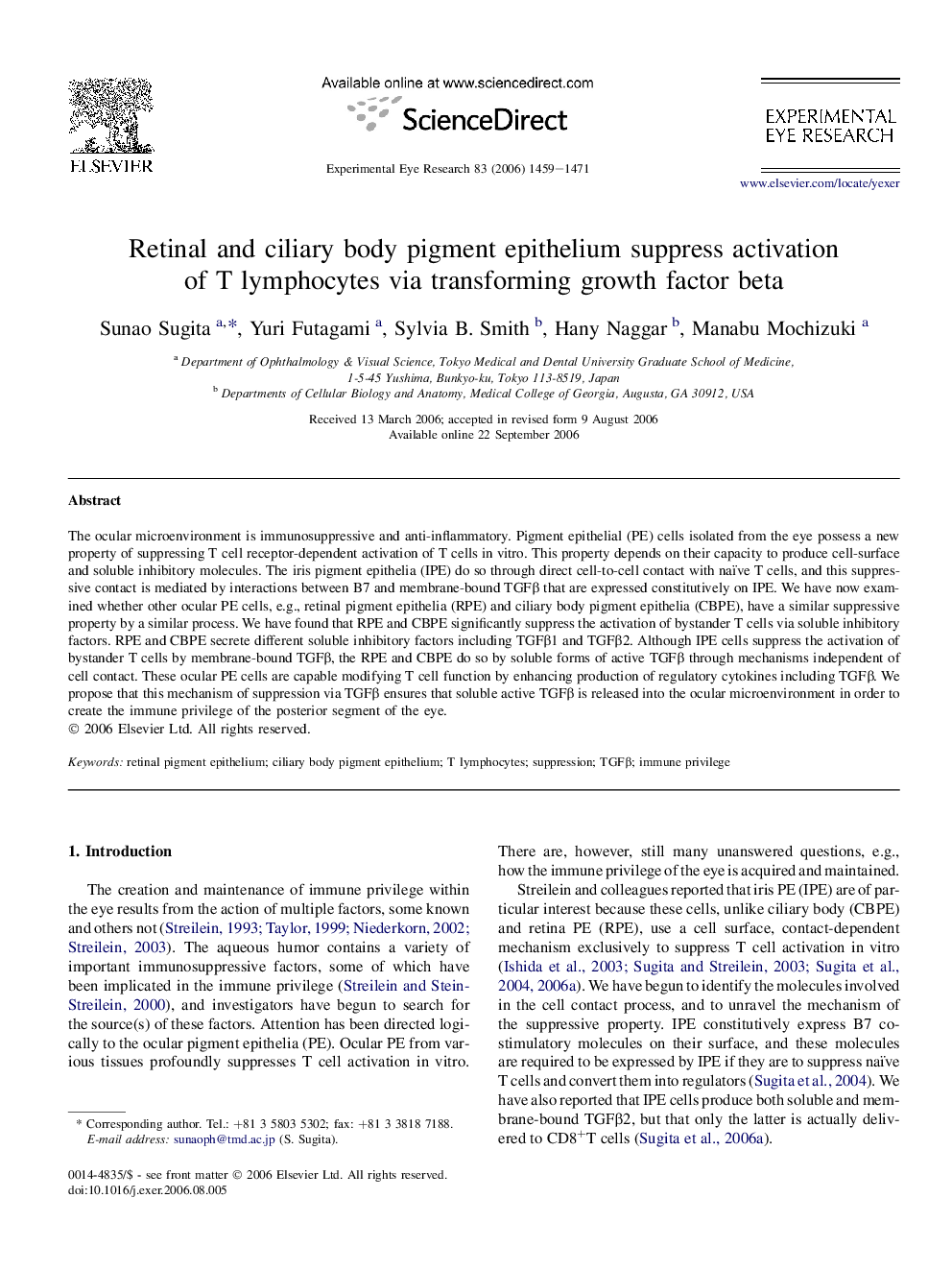| Article ID | Journal | Published Year | Pages | File Type |
|---|---|---|---|---|
| 4012496 | Experimental Eye Research | 2006 | 13 Pages |
The ocular microenvironment is immunosuppressive and anti-inflammatory. Pigment epithelial (PE) cells isolated from the eye possess a new property of suppressing T cell receptor-dependent activation of T cells in vitro. This property depends on their capacity to produce cell-surface and soluble inhibitory molecules. The iris pigment epithelia (IPE) do so through direct cell-to-cell contact with naïve T cells, and this suppressive contact is mediated by interactions between B7 and membrane-bound TGFβ that are expressed constitutively on IPE. We have now examined whether other ocular PE cells, e.g., retinal pigment epithelia (RPE) and ciliary body pigment epithelia (CBPE), have a similar suppressive property by a similar process. We have found that RPE and CBPE significantly suppress the activation of bystander T cells via soluble inhibitory factors. RPE and CBPE secrete different soluble inhibitory factors including TGFβ1 and TGFβ2. Although IPE cells suppress the activation of bystander T cells by membrane-bound TGFβ, the RPE and CBPE do so by soluble forms of active TGFβ through mechanisms independent of cell contact. These ocular PE cells are capable modifying T cell function by enhancing production of regulatory cytokines including TGFβ. We propose that this mechanism of suppression via TGFβ ensures that soluble active TGFβ is released into the ocular microenvironment in order to create the immune privilege of the posterior segment of the eye.
